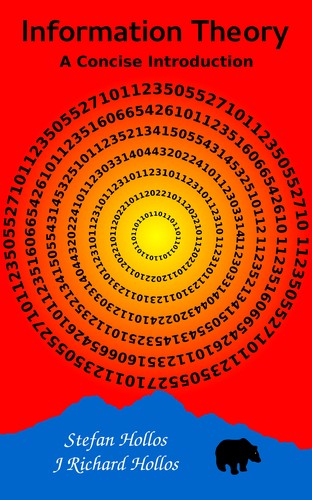Information Theory: A Concise Introduction - Info and Reading Options
By Stefan Hollos

"Information Theory: A Concise Introduction" was published by Abrazol Publishing in 2015 - Longmont, USA and it has 136 pages.
“Information Theory: A Concise Introduction” Metadata:
- Title: ➤ Information Theory: A Concise Introduction
- Author: Stefan Hollos
- Number of Pages: 136
- Publisher: Abrazol Publishing
- Publish Date: 2015
- Publish Location: Longmont, USA
“Information Theory: A Concise Introduction” Subjects and Themes:
- Subjects: information theory - entropy - channel capacity - gambling - error correction
- People: Claude Elwood Shannon - David A. Huffman - Robert Fano
Edition Specifications:
- Format: paperback
- Dimensions: 8.5 x 5.5 x 0.375 inches
Edition Identifiers:
- The Open Library ID: OL25875155M - OL17302026W
- Library of Congress Control Number (LCCN): 2015907737
- ISBN-13: 9781887187282
- All ISBNs: 9781887187282
AI-generated Review of “Information Theory: A Concise Introduction”:
"Information Theory: A Concise Introduction" Table Of Contents:
- 1- Preface
- 2- Introduction
- 3- Number guessing game
- 4- Counterfeit coins
- 5- Encoding Messages
- 6- Nonuniform probabilities
- 7- Kraft-McMillan inequality
- 8- Average code word length
- 9- Huffman Coding
- 10- Arithmetic Coding
- 11- Entropy
- 12- Entropy of a Markov Chain
- 13- Principle of maximum entropy
- 14- Entropy of English
- 15- Channel Capacity
- 16- Channel capacity and gambling
- 17- Error Correction Coding
- 18- Repetition codes
- 19- Parity check codes
- 20- Hamming codes
- 21- Supplementary Material
- 22- Review of logarithms
- 23- Review of Discrete Probability
- 24- References and Further Reading
- 25- Acknowledgements
- 26- About the Authors
"Information Theory: A Concise Introduction" Description:
The Open Library:
Books on information theory tend to fall into one of two extreme categories. There are large academic textbooks that cover the subject with great depth and rigor. Probably the best known of these is the book by Cover and Thomas. At the other extreme are the popular books such as the ones by Pierce and Gleick. They provide a very superficial introduction to the subject, enough to engage in cocktail party conversation but little else. This book attempts to bridge these two extremes. This book is written for someone who is at least semi-mathematically literate and wants a concise introduction to some of the major concepts in information theory. The level of mathematics needed is very elementary. A rudimentary grasp of logarithms, probability, and basic algebra is all that is required. Two chapters at the end of the book provide a review of everything the reader needs to know about logarithms and discrete probability to get the most out of the book. Very little attention is given to mathematical proof. Instead the results are presented in a way that makes them almost obvious or at least plausible. The book will appeal to anyone looking for a fast introduction to most of the major topics in information theory. An introduction that is concise but not superficial.
Read “Information Theory: A Concise Introduction”:
Read “Information Theory: A Concise Introduction” by choosing from the options below.
Search for “Information Theory: A Concise Introduction” downloads:
Visit our Downloads Search page to see if downloads are available.
Find “Information Theory: A Concise Introduction” in Libraries Near You:
Read or borrow “Information Theory: A Concise Introduction” from your local library.
- The WorldCat Libraries Catalog: Find a copy of “Information Theory: A Concise Introduction” at a library near you.
Buy “Information Theory: A Concise Introduction” online:
Shop for “Information Theory: A Concise Introduction” on popular online marketplaces.
- Ebay: New and used books.